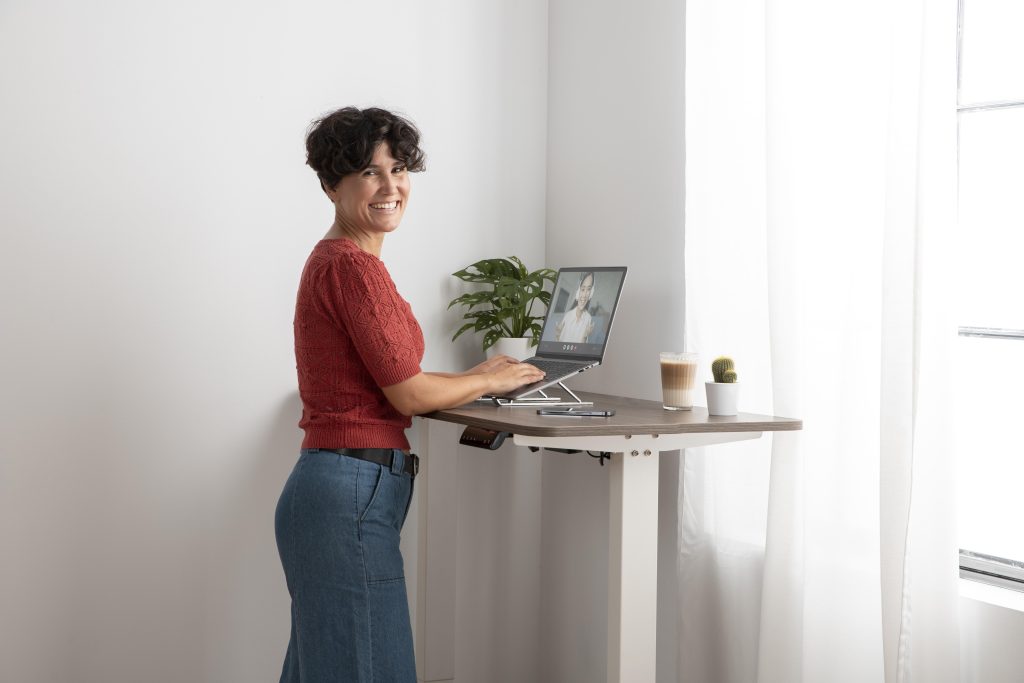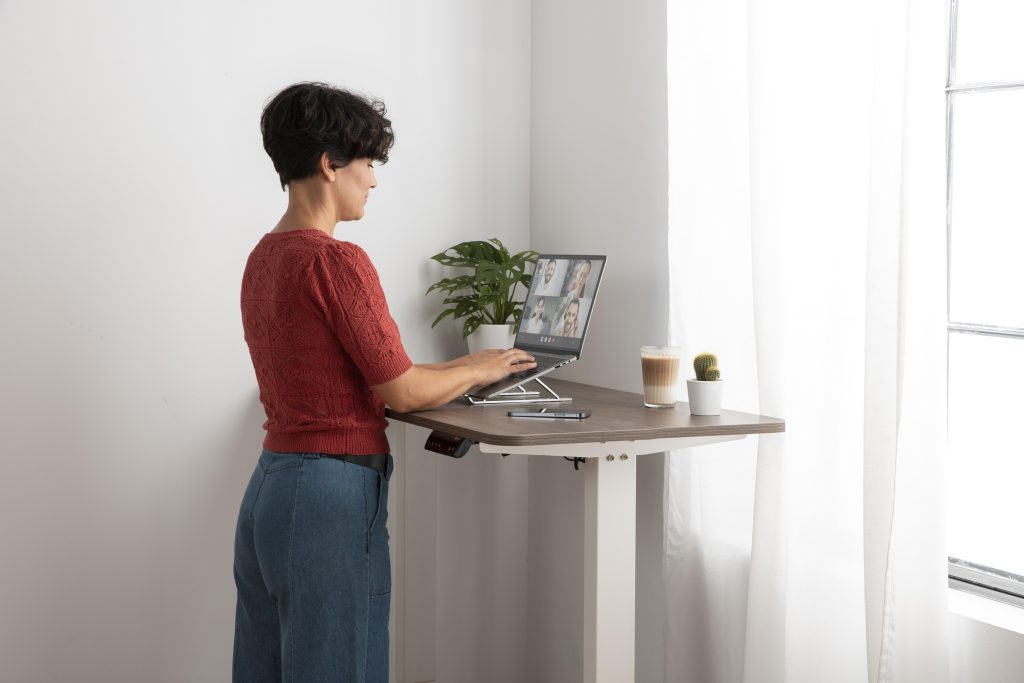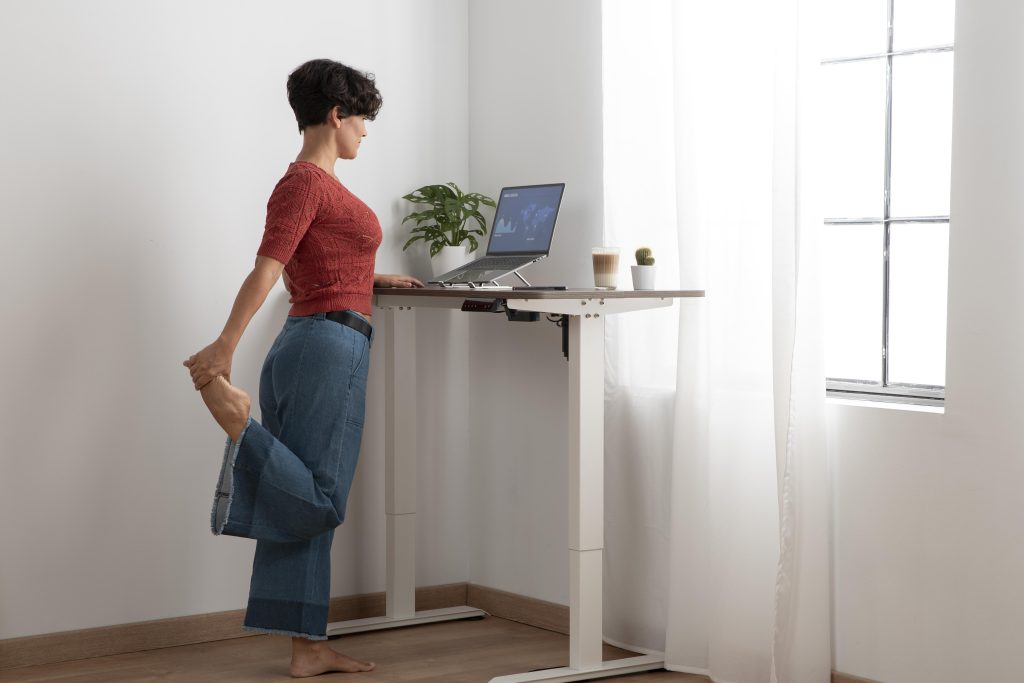Table of Contents

Choosing between a standing desk and a sitting desk is more than just a matter of comfort—it’s about long-term health, productivity, and lifestyle. With recent research suggesting a direct link between prolonged sitting and a variety of health issues, more people are turning to standing desks and sit stand desks as alternatives. But is standing at work truly better for everyone?
Standing vs Sitting: Health Effects You Need to Know
Spending long hours at a desk job—whether sitting or standing—can take a toll on your body. Sitting for extended periods has been associated with a higher risk of heart disease, muscle fatigue, and poor blood circulation. The World Health Organization even identifies prolonged sitting as a global health concern.
On the other hand, standing for long periods without proper support can lead to foot pain, joint aches, and calf fatigue. Using an anti-fatigue mat, maintaining proper ergonomics, and incorporating physical activity like calf raises can help reduce these problems associated with standing while working.
What Does Recent Research Suggest About Sitting and Standing?
Recent research suggests that prolonged periods of either standing or sitting may be harmful. The key lies in variation and movement. A sit-stand desk offers the flexibility to alternate between postures throughout the day, allowing your body to stay active and reduce strain.
Standing Desks: Are They Better for Your Health?
Switching to a standing desk can lead to various health benefits, especially if you’re coming from a completely sedentary setup. People who use sit-stand desks may burn more calories during the day, which can aid in weight loss and help with maintaining a healthy lifestyle.
Additional benefits of standing at work may include:
- Reduced neck pain and back tension
- Improved posture through correct ergonomics
- Better circulation of blood and reduced risk of clots, helping mitigate the risk of heart disease
- Encouragement of micro-movements like calf raises and stretches
However, standing desks are not a magic bullet. Standing vs sitting isn’t a one-size-fits-all equation—it depends on your body, habits, and work style.
The Best of Both Worlds

A sit stand desk—also known as an adjustable desk—allows you to transition between sitting time and standing time throughout your workday. This type of setup helps counteract the dangers of prolonged sitting without forcing you to stand for eight hours straight.
Using a standing desk part-time helps balance the health risks of both sitting and standing for too long. You can use a fitness tracker to remind you to switch positions and include light physical activity in your work routine.
Does Using a Sit Stand Desk Help Burn More Calories?
When comparing calories standing versus sitting, standing does burn slightly more, about 88 calories an hour versus 80. Over long periods, this can add up, but the real advantage lies in reducing sedentary sitting time and keeping your metabolism more active.
Still, neither posture replaces regular exercise. Staying physically active outside of work hours is crucial for avoiding health problems linked to long periods of inactivity.
Final Thoughts: Making an Informed Decision

Ultimately, the standing vs sitting debate isn’t about choosing one over the other—it’s about balancing the health benefits. Consider your job, daily routine, and any existing health issues. If you’re sitting all day, introducing a sit-stand desk and incorporating physical activity can make a big difference.
Whether you sit, stand, or alternate between both, what matters most is staying aware of your posture, moving often, and supporting your body to avoid the downsides of extended periods in any one position.
Frequently Asked Questions
Are standing desks better than sitting?
They may offer health benefits like improved posture and energy, but the benefit comes from changing positions regularly, not just prolonged standing.
Is it better to stand for 8 hours or sit?
Neither is ideal. Alternating between sitting and standing every 30–60 minutes is better for your body than prolonged standing or sitting for eight hours straight.
Is it healthier to work at a standing desk?
A sit stand desk supports better posture and burns more calories, but without breaks and support like an anti-fatigue mat, prolonged standing may cause you to experience fatigue or pain.
How many hours a day should you stand at a standing desk?
Experts recommend starting with 15 to 30 minutes per hour of standing and increasing gradually. Use your fitness tracker to schedule these intervals.
